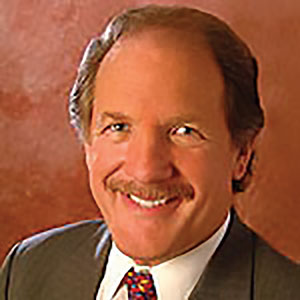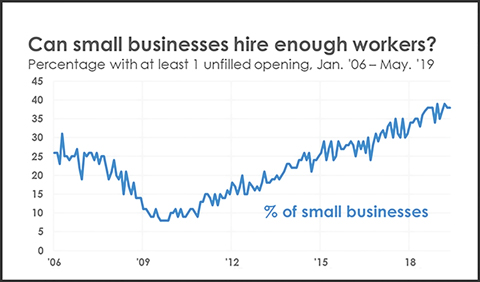Small Business Hiring Continues as Problem Finding Qualified Workers Ties Record
Small Businesses Owners Continue to Create Jobs, Raise Compensation
 NFIB’s chief economist William C. Dunkelberg, issued the following comments on NFIB’s May 2019 Jobs Report:
NFIB’s chief economist William C. Dunkelberg, issued the following comments on NFIB’s May 2019 Jobs Report:
America’s small businesses are continuing their hiring spree, with a net addition of 0.32 workers per firm, according to NFIB’s monthly jobs report released. However, 25 percent of all owners cited the difficulty of finding qualified workers as their Single Most Important Business Problem matching the record high.
Sixty-two percent of owners reported hiring or trying to hire employees, up five points from last month, but 54 percent reported few or no qualified applicants for the positions they were trying to fill (up five points).
“Small businesses continue to ignite the economy, with owners creating jobs and raising compensation for employees,” said NFIB’s President and CEO Juanita D. Duggan. “Across the nation, small businesses need qualified workers more than ever to keep the economy strong.”
In the construction industry, 44 percent cited the difficulty of finding qualified workers as their Single Most Important Business Problem. Thirty percent cited it in manufacturing, but only four percent cited it in the wholesale trades industry.

Among all small business employers, 13 percent reported increasing employment an average of 3.3 workers per firm, and four percent reported reducing employment an average of 1.4 workers per firm (seasonally adjusted).
Even with the current job openings, 38 percent of owners reported job openings they could not fill in the current period.
In construction, 59 percent had job openings, with 93 percent of those for skilled workers. In transportation services, 45 percent of business had skilled openings, and 14 percent of all firms reported using temporary workers.
“Productivity increased at a net 3.6 percent annual rate in the first quarter which is the best reading in a decade,” said NFIB’s Chief Economist William Dunkelberg. “The increase in output per hour lowered unit labor costs which reduced the pressure to raise prices to cover higher compensation costs. Nearly half of the private employment is in the small business sector, so productivity improvement is important for income growth for U.S. workers.”
A net 34 percent of all firms reported higher worker compensation, unchanged from last month. Plans to raise compensation posted a four-point gain to a net 24 percent in May, a historically high level.



